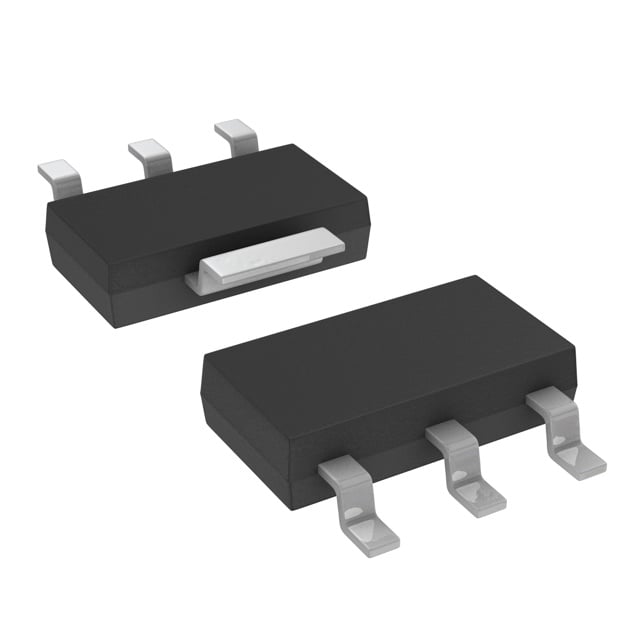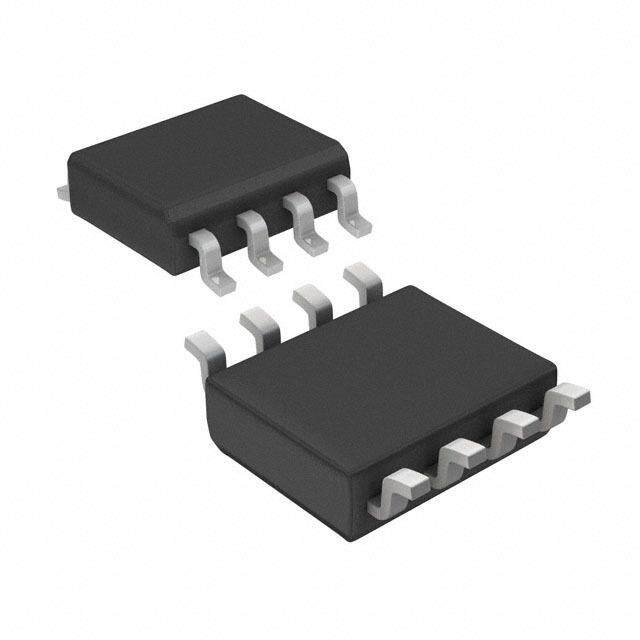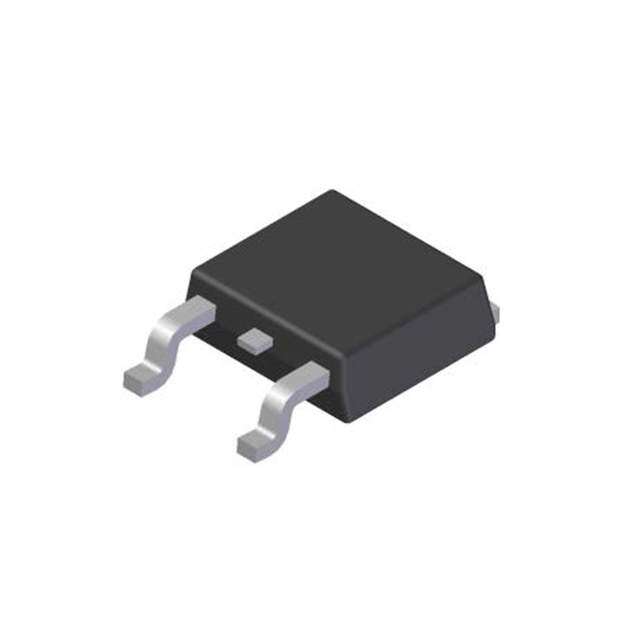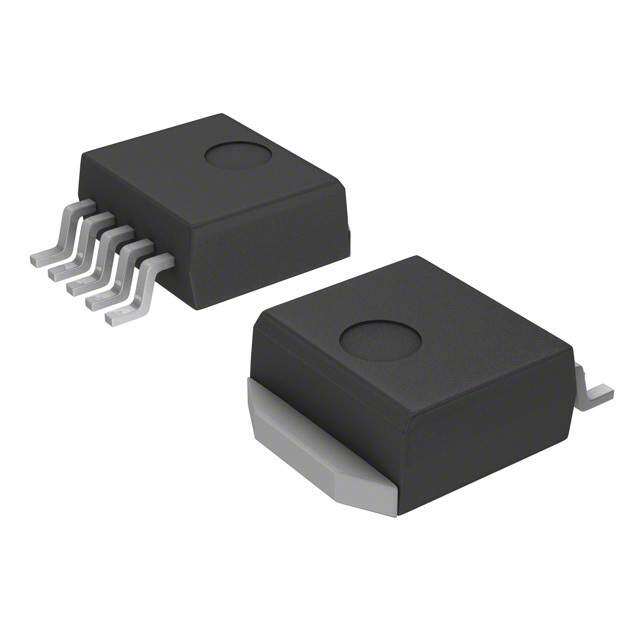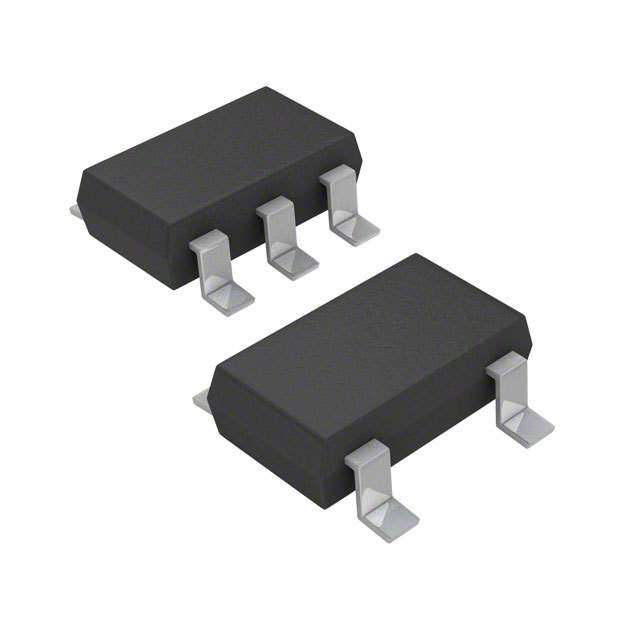ICGOO在线商城 > 集成电路(IC) > PMIC - 稳压器 - 线性 > MC33375ST-3.3T3G
- 型号: MC33375ST-3.3T3G
- 制造商: ON Semiconductor
- 库位|库存: xxxx|xxxx
- 要求:
| 数量阶梯 | 香港交货 | 国内含税 |
| +xxxx | $xxxx | ¥xxxx |
查看当月历史价格
查看今年历史价格
MC33375ST-3.3T3G产品简介:
ICGOO电子元器件商城为您提供MC33375ST-3.3T3G由ON Semiconductor设计生产,在icgoo商城现货销售,并且可以通过原厂、代理商等渠道进行代购。 MC33375ST-3.3T3G价格参考。ON SemiconductorMC33375ST-3.3T3G封装/规格:PMIC - 稳压器 - 线性, Linear Voltage Regulator IC Positive Fixed 1 Output 300mA SOT-223。您可以下载MC33375ST-3.3T3G参考资料、Datasheet数据手册功能说明书,资料中有MC33375ST-3.3T3G 详细功能的应用电路图电压和使用方法及教程。
| 参数 | 数值 |
| 产品目录 | 集成电路 (IC)半导体 |
| 描述 | IC REG LDO 3.3V 0.3A SOT223低压差稳压器 3.3V 300mA |
| 产品分类 | |
| 品牌 | ON Semiconductor |
| 产品手册 | |
| 产品图片 |
|
| rohs | 符合RoHS无铅 / 符合限制有害物质指令(RoHS)规范要求 |
| 产品系列 | 电源管理 IC,低压差稳压器,ON Semiconductor MC33375ST-3.3T3G- |
| 数据手册 | |
| 产品型号 | MC33375ST-3.3T3G |
| 产品种类 | Linear Regulators- Low Drop Out |
| 供应商器件封装 | SOT-223 |
| 其它名称 | MC33375ST-3.3T3GOSCT |
| 包装 | 剪切带 (CT) |
| 商标 | ON Semiconductor |
| 回动电压—最大值 | 100 mV at 10 mA |
| 安装类型 | 表面贴装 |
| 安装风格 | SMD/SMT |
| 封装 | Reel |
| 封装/外壳 | TO-261-4,TO-261AA |
| 封装/箱体 | SOT-223-4 |
| 工作温度 | -40°C ~ 125°C |
| 工厂包装数量 | 4000 |
| 最大工作温度 | + 125 C |
| 最大输入电压 | 13 V |
| 最小工作温度 | - 40 C |
| 标准包装 | 1 |
| 电压-跌落(典型值) | 0.26V @ 300mA |
| 电压-输入 | 最高 13V |
| 电压-输出 | 3.3V |
| 电压调节准确度 | 1 % |
| 电流-输出 | 300mA |
| 电流-限制(最小值) | - |
| 稳压器拓扑 | 正,固定式 |
| 稳压器数 | 1 |
| 系列 | MC33375 |
| 线路调整率 | 10 mV |
| 负载调节 | 25 mV |
| 输入偏压电流—最大 | 0.125 mA |
| 输出电压 | 3.3 V |
| 输出电流 | 300 mA |
| 输出端数量 | 1 Output |
| 输出类型 | Fixed |
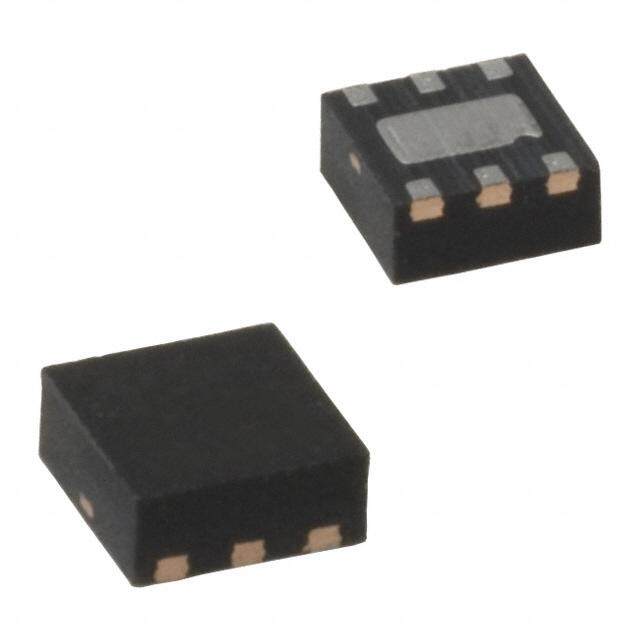
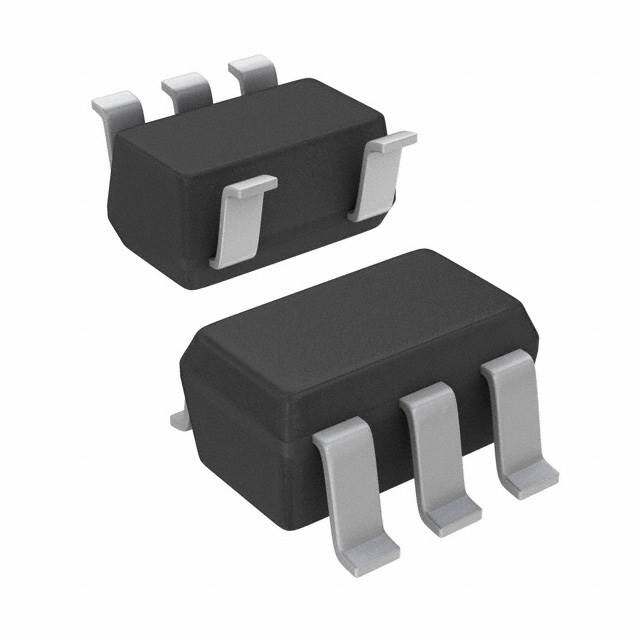


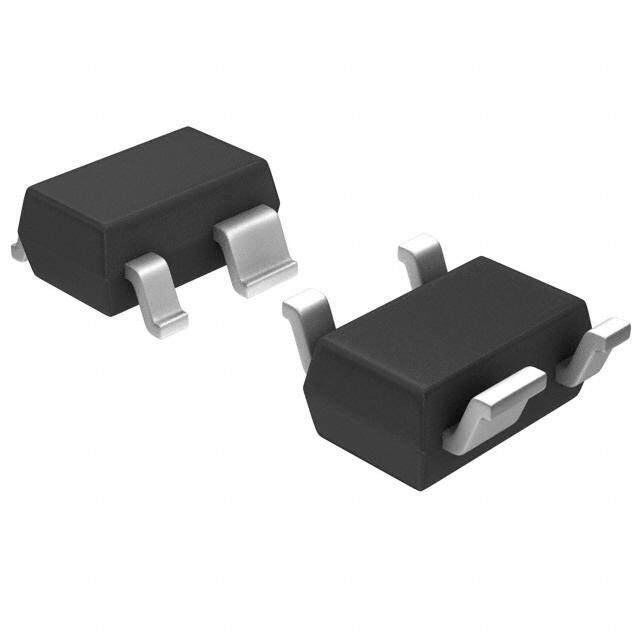
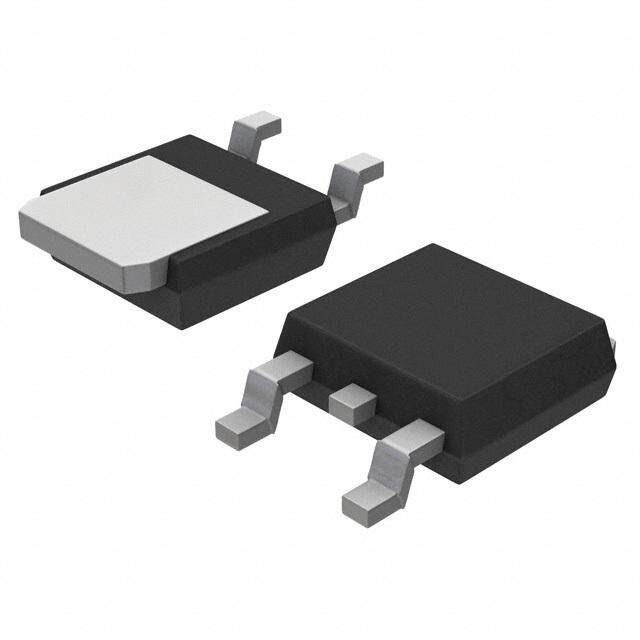
PDF Datasheet 数据手册内容提取
Voltage Regulator - Low Dropout, On/Off Control 300 mA MC33375, NCV33375 Series The MC33375 series are micropower low dropout voltage regulators available in a wide variety of output voltages as well as www.onsemi.com packages, SOT−223 and SOP−8. These devices feature a very low quiescent current and are capable of supplying output currents up to LOW DROPOUT 300 mA. Internal current and thermal limiting protection are provided by the presence of a short circuit at the output and an internal thermal MICROPOWER VOLTAGE shutdown circuit. REGULATOR The MC33375 has a control pin that allows a logic level signal to turn−off or turn−on the regulator output. MARKING Due to the low input−to−output voltage differential and bias current DIAGRAMS specifications, these devices are ideally suited for battery powered computer, consumer, and industrial equipment where an extension of useful battery life is desirable. 4 SOT−223 AYM ST SUFFIX 375xx(cid:2) Features: 1 (cid:2) CASE 318E • Low Quiescent Current (0.3 (cid:2)A in OFF mode; 125 (cid:2)A in ON mode) • 1 Low Input−to−Output Voltage Differential of 25 mV at I = 10 mA, O and 260 mV at I = 300 mA O 8 • Extremely Tight Line and Load Regulation 375xx SOIC−8 • Stable with Output Capacitance of only 0.33 (cid:2)F for 2.5 V Output 8 D SUFFIX ALY(cid:2)W Voltage 1 CASE 751 • Internal Current and Thermal Limiting 1 • Logic Level ON/OFF Control A = Assembly Location • NCV Prefix for Automotive and Other Applications Requiring Y = Year M = Date Code Unique Site and Control Change Requirements; AEC−Q100 L = Wafer Lot Qualified and PPAP Capable W = Work Week • These are Pb−Free Devices xx = Voltage Version (cid:2) = Pb−Free Package (Note: Microdot may be in either location) Vin Vout ORDERING INFORMATION Thermal & See detailed ordering and shipping information in the Anti−sat package dimensions section on page 11 of this data sheet. Protection On/Off Rint On/Off 1.23 V Block V. Ref. 54 K GND This device contains 41 active transistors Figure 1. Simplified Block Diagram © Semiconductor Components Industries, LLC, 2013 1 Publication Order Number: January, 2020 − Rev. 18 MC33375/D
MC33375, NCV33375 Series PIN CONNECTIONS Gnd 1 8 4 Input Output 2 7 Gnd Gnd 3 6 Gnd Gnd 4 5 ON/OFF N/C 1 2 3 Vin ON/ Vout OFF MAXIMUM RATINGS Rating Symbol Value Unit Input Voltage VCC 13 Vdc Power Dissipation and Thermal Characteristics TA = 25°C Maximum Power Dissipation PD Internally Limited W Case 751 (SOP−8) D Suffix Thermal Resistance, Junction−to−Ambient R(cid:3)JA 160 °C/W Thermal Resistance, Junction−to−Case R(cid:3)JC 25 °C/W Case 318E (SOT−223) ST Suffix Thermal Resistance, Junction−to−Air R(cid:3)JA 245 °C/W Thermal Resistance, Junction−to−Case R(cid:3)JC 15 °C/W Output Current IO 300 mA Maximum Junction Temperature TJ 150 °C Operating Ambient Temperature Range TA −40 to +125 °C Storage Temperature Range Tstg −65 to +150 °C Stresses exceeding those listed in the Maximum Ratings table may damage the device. If any of these limits are exceeded, device functionality should not be assumed, damage may occur and reliability may be affected. www.onsemi.com 2
MC33375, NCV33375 Series ELECTRICALCHARACTERISTICS (CL = 1.0 (cid:2)F, TA = 25°C, for min/max values TJ = −40°C to +125°C, Note 1) Characteristic Symbol Min Typ Max Unit Output Voltage IO = 0 mA to 250 mA VO Vdc 1.8 V Suffix TA = 25°C, Vin = [VO + 1] V 1.782 1.80 1.818 2.5 V Suffix 2.475 2.50 2.525 3.0 V Suffix 2.970 3.00 3.030 3.3 V Suffix 3.267 3.30 3.333 5.0 V Suffix 4.950 5.00 5.05 1.8 V Suffix Vin = [VO + 1] V, 0 < IO < 100 mA 1.764 − 1.836 2.5 V Suffix 2% Tolerance from TJ = −40 to +125°C 2.450 − 2.550 3.0 V Suffix 2.940 − 3.060 3.3 V Suffix 3.234 − 3.366 5.0 V Suffix 4.900 − 5.100 Line Regulation Vin = [VO + 1] V to 12 V, IO = 250 mA, Regline − 2.0 10 mV All Suffixes TA = 25°C Load Regulation Vin = [VO + 1] V, IO = 0 mA to 250 mA, Regload − 5.0 25 mV All Suffixes TA = 25°C Dropout Voltage (Note 3) Vin − VO mV IO = 10 mA TJ = −40°C to +125°C − 25 100 IO = 100 mA − 115 200 IO = 250 mA − 220 400 IO = 300 mA − 260 500 Ripple Rejection (120 Hz) Vin(peak−peak) = [VO + 1.5] V to [VO + 5.5] V − 65 75 − dB Output Noise Voltage Vn (cid:2)Vrms CL = 1.0 (cid:2)F IO = 50 mA (10 Hz to 100 kHz) − 160 − CL = 200 (cid:2)F − 46 − CURRENTPARAMETERS Quiescent Current ON Mode Vin = [VO + 1] V, IO = 0 mA IQOn − 125 200 (cid:2)A Quiescent Current OFF Mode IQOff − 0.3 4.0 (cid:2)A Quiescent Current ON Mode SAT Vin = [VO − 0.5] V, IO = 0 mA (Notes 2, 4) IQSAT (cid:2)A 3.0 V Suffix − 1500 2000 3.3 V Suffix − 1500 2000 5.0 V Suffix − 1500 2000 Current Limit Vin = [VO + 1] V, VO Shorted ILIMIT − 450 − mA ON/OFF INPUTS On/Off Input Voltage VCTRL V Logic “1” (Regulator On) Vout = VO ± 2% 2.4 − − Logic “0” (Regulator Off) Vout < 0.03 V − − 0.5 Logic “0” (Regulator Off) Vout < 0.05 V (1.8 V Option) − − 0.3 THERMAL SHUTDOWN Thermal Shutdown − − 150 − °C 1. Low duty pulse techniques are used during test to maintain junction temperature as close to ambient as possible. 2. Quiescent Current is measured where the PNP pass transistor is in saturation. Vin = [VO − 0.5] V guarantees this condition. 3. For 1.8 V version VDO is constrained by the minimum input voltage of 2.5 V. 4. For 1.8 V and 2.5 V versions, IQSAT is constrained by the minimum input voltage of 2.5 V. www.onsemi.com 3
MC33375, NCV33375 Series DEFINITIONS Load Regulation − The change in output voltage for a Depending on ambient temperature, it is possible to change in load current at constant chip temperature. calculate the maximum power dissipation and so the Dropout Voltage − The input/output differential at which maximum current as following: the regulator output no longer maintains regulation against T –T further reductions in input voltage. Measured when the Pd(cid:2) J A output drops 100 mV below its nominal value (which is R(cid:3)JA measured at 1.0 V differential), dropout voltage is affected The maximum operating junction temperature TJ is by junction temperature, load current and minimum input specified at 150°C, if TA = 25°C, then PD can be found. By supply requirements. neglecting the quiescent current, the maximum power Output Noise Voltage − The RMS AC voltage at the dissipation can be expressed as: output with a constant load and no input ripple, measured P over a specified frequency range. I (cid:2) D out V –V Maximum Power Dissipation − The maximum total CC out dissipation for which the regulator will operate within The thermal resistance of the whole circuit can be specifications. evaluated by deliberately activating the thermal shutdown Quiescent Current − Current which is used to operate the of the circuit (by increasing the output current or raising the regulator chip and is not delivered to the load. input voltage for example). Line Regulation − The change in output voltage for a Then you can calculate the power dissipation by change in the input voltage. The measurement is made under subtracting the output power from the input power. All conditions of low dissipation or by using pulse techniques variables are then well known: power dissipation, thermal such that the average chip temperature is not significantly shutdown temperature (150°C for MC33375) and ambient affected. temperature. Maximum Package Power Dissipation − The maximum T –T package power dissipation is the power dissipation level at R(cid:3)JA(cid:2) JP A D which the junction temperature reaches its maximum value i.e. 150°C. The junction temperature is rising while the difference between the input power (V X I ) and the CC CC output power (V X I ) is increasing. out out www.onsemi.com 4
MC33375, NCV33375 Series 7 200 7 70 TA = 25°C TA = 25°C 60 V, INPUT VOLTAGE (V)in654321 CIVLoL =u =t 1= 00 .3 4m.73A (cid:2)VF VVoinut -05115005000OUTPUT VOLTAGE CHANGE (mVV, INPUT VOLTAGE (V)in654321 CIVLoL =u =t 1= 30 33 m .(cid:2)3A FV VVoinut -0245131000000OUTPUT VOLTAGE CHANGE (mV ) ) 0 -100 0 -20 0 20 40 60 80 100 120 140 160 180 200 0 50 100 150 200 TIME ((cid:2)S) TIME ((cid:2)S) Figure 2. Line Transient Response Figure 3. Line Transient Response 1.0 300 350 200 0.8 250 0.14 100 LOAD 0.6 OU 150 LOAD CURRENT OU mA) 0 CURRENT 0.4 TPUT mA) 50 0.09TPUT URRENT (--120000 -00..22 0 VOLTAGE URRENT (---21555000 -00.0.041 VOLTAGE LOAD C----564300000000 CVTVAoiLnu ==t= = 214 5.3.03°. 3 (cid:2)VC VF CHVAoNutGE ---000...864 CHANGE (V) LOAD C----654355550000 CHVAoNutGE CVTVAoiLnu ==t= = 234 533.3°..03 VC V(cid:2)F --00..0116 CHANGE (V) -1.0 -700 -750 -0.16 0 50 100 150 200 250 300 350 400 0 50 100 150 200 250 300 TIME ((cid:2)S) TIME ((cid:2)S) Figure 4. Load Transient Response Figure 5. Load Transient Response 3.5 300 3.0 250 IL = 1 mA V) GE (V) 2.5 IL = 250 mA GE (m 200 TA 2.0 TA L L O O 150 V V T 1.5 T U U TP PO 100 U 1.0 O O R D 50 0.5 0 0 0 0.5 1.0 1.5 2.0 2.5 3.0 3.5 4.0 4.5 5.0 1 10 100 1000 INPUT VOLTAGE (V) IO, OUTPUT CURRENT (mA) Figure 6. Output Voltage versus Input Voltage Figure 7. Dropout Voltage versus Output Current www.onsemi.com 5
MC33375, NCV33375 Series 300 12 250 10 V) IL = 300 mA m E ( 200 8 G OLTA 150 IL = 250 mA (mA) 6 IL = 300 mA V d POUT 100 IL = 100 mA Ign 4 RO IL = 100 mA D 50 2 IL = 10 mA IL = 50 mA 0 0 -40 0 25 85 0 1 2 3 4 5 6 7 8 TEMPERATURE (°C) Vin (VOLTS) Figure 8. Dropout Voltage versus Temperature Figure 9. Ground Pin Current versus Input Voltage 8 2.5 7 IL = 250 mA 2.495 IO = 0 6 2.49 A) 5 LTS) IO = 250 mA m O (d 4 (V 2.485 gn ut I 3 IL = 100 mA Vo 2.48 2 IL = 50 mA 2.475 1 0 2.47 -40 -20 0 20 40 60 80 100 120 140 -40 0 25 85 TA (°C) TEMPERATURE (°C) Figure 10. Ground Pin Current versus Figure 11. Output Voltage versus Ambient Ambient Temperature Temperature (Vin = Vout + 1V) www.onsemi.com 6
MC33375, NCV33375 Series 2.5 2.495 IO = 0 2.49 S) OLT 2.485 IO = 250 mA V ( ut 2.48 o V 2.475 2.47 2.465 -40 0 25 85 TEMPERATURE (°C) Figure 12. Output Voltage versus Ambient Temperature (V = 12 V) in 70 70 60 60 IL = 10 mA IL = 100 mA 50 50 IL = 1 mA IL = 250 mA 40 40 B B d d 30 30 20 20 10 10 0 0 0.1 1 10 100 0.1 1 10 100 FREQUENCY (kHz) FREQUENCY (kHz) Figure 13. Ripple Rejection Figure 14. Ripple Rejection 5 ENABLE 4.5 4 3.5 V) E ( 3 CL = 1.0 (cid:2)F G A T 2.5 L O V 2 CL = 33 (cid:2)F 1.5 1 0.5 0 0 100 200 300 400 500 TIME ((cid:2)S) Figure 15. Enable Transient www.onsemi.com 7
MC33375, NCV33375 Series 1.8 V Option 1.85 2.0 1.84 ILOAD = 100 mA 1.8 GE (V) 11..8832 GE (V) 11..64 OLTA 1.81 OLTA 1.2 OUTPUT V 11..8709 OUTPUT V 01..80 , UT1.78 , UT0.6 VO1.77 VO0.4 TA = 25°C 1.76 0.2 ILOAD = 0 mA 1.75 0 -40 -20 0 20 40 60 80 100 120 0 1 2 3 4 5 6 TA, AMBIENT TEMPERATURE (°C) VCC, (V) Figure 16. Output Voltage versus Temperature Figure 17. Output Voltage versus Input Voltage 12 140 120 10 8 TA = 25°C 100 VCC = 3 V , (mA)nd 6 (cid:2)( A)Q 8600 g I I 4 40 2 TA = 25°C 20 ILOAD = 0 mA 0 0 0 50 100 150 200 250 300 350 0 1 2 3 4 5 6 ILOAD, (mA) VCC, (V) Figure 18. Ground Current versus Load Current Figure 19. Quiescent Current versus Input Voltage 80 VCC = 3 V 70 ILOAD = 1 mA 60 TA = 25°C COUT = 1 (cid:2)F ENABLE 50 2 V B) d R ( 40 VOUT R S P 30 20 0 V 10 0 0.1 1 10 100 1000 0 5 10 15 20 25 30 35 40 45 50 f, FREQUENCY (kHz) t, TIME ((cid:2)s) Figure 20. PSRR versus Frequency Figure 21. Enable Response www.onsemi.com 8
MC33375, NCV33375 Series VCC = 3 V ILOAD = 1 mA to 100 mA TA = 25°C 1.82 V 1.80 V 1.78 V 100 mA 1 mA 0 0.5 1 1.5 2 2.5 3 3.5 4 4.5 5 t, TIME (ms) Figure 22. Load Transient Response APPLICATIONS INFORMATION ON/OFF Vin Vout MC33375−xx Cin Cout LOAD GND Figure 23. Typical Application Circuit The MC33375 regulators are designed with internal frequencies. A 0.33 (cid:2)F or larger tantalum, mylar, ceramic, current limiting and thermal shutdown making them or other capacitor having low internal impedance at high user−friendly. Figure 15 is a typical application circuit. The frequencies should be chosen. The bypass capacitor should output capability of the regulator is in excess of 300 mA, be mounted with shortest possible lead or track length with a typical dropout voltage of less than 260 mV. Internal directly across the regulator’s input terminals. Figure 16 protective features include current and thermal limiting. shows the ESR that allows the LDO to remain stable for various load currents. EXTERNAL CAPACITORS These regulators require only a 0.33 (cid:2)F (or greater) 100 capacitance between the output and ground for stability for Vout = 3.0 V 1.8 V, 2.5 V, 3.0 V, and 3.3 V output voltage options. Output Cout = 1.0 (cid:2)F voltage options of 5.0 V require only 0.22 (cid:2)F for stability. Cin = 1.0 (cid:2)F The output capacitor must be mounted as close as possible m) 10 h to the MC33375. If the output capacitor must be mounted o R ( further than two centimeters away from the MC33375, then ES Stable Region a larger value of output capacitor may be required for stability. A value of 0.68 (cid:2)F or larger is recommended. Most 1.0 type of aluminum, tantalum, or multilayer ceramic will perform adequately. Solid tantalums or appropriate multilayer ceramic capacitors are recommended for 0.1 operation below 25°C. An input bypass capacitor is 0 50 100 150 200 250 300 recommended to improve transient response or if the LOAD CURRENT (mA) regulator is connected to the supply input filter with long Figure 24. ESR for V = 3.0V out wire lengths, more than 4 inches. This will reduce the Applications should be tested over all operating circuit’s sensitivity to the input line impedance at high conditions to insure stability. www.onsemi.com 9
MC33375, NCV33375 Series THERMAL PROTECTION The internal current limit will typically limit current to Internal thermal limiting circuitry is provided to protect 450 mA. If during current limit the junction exceeds 150°C, the integrated circuit in the event that the maximum junction the thermal protection will protect the device also. Current temperature is exceeded. When activated, typically at limit is not a substitute for proper heatsinking. 150°C, the output is disabled. There is no hysteresis built OUTPUT NOISE into the thermal protection. As a result the output will appear In many applications it is desirable to reduce the noise to be oscillating during thermal limit. The output will turn present at the output. Reducing the regulator bandwidth by off until the temperature drops below the 150°C then the increasing the size of the output capacitor will reduce the output turns on again. The process will repeat if the junction noise on the MC33375. increases above the threshold. This will continue until the ON/OFF PIN existing conditions allow the junction to operate below the When this pin is pulled low, the MC33375 is off. This pin temperature threshold. should not be left floating. The pin should be pulled high for Thermal limit is not a substitute for proper the MC33375 to operate. heatsinking. W) 180 1.6 N ( E, O ANCCW) 160 PD(max) for TA = 50°C 1.4 PATI ESIST°AIR ( 140 2.0 oz. Copper 1.2 DISSI AL R−TO− 120 MSiizneim Puamd ÎÎÎÎL ÎÎ 1.0 WER MN O , THERJAJUNCTIO 18000 LÎÎÎÎÎÎ 00..68 XIMUM P R(cid:3) R(cid:3)JA MA 60 0.4 , D 0 5.0 10 15 20 25 30 P L, LENGTH OF COPPER (mm) Figure 25. SOT−223 Thermal Resistance and Maximum Power Dissipation versus P.C.B. Copper Length W) C/ °R ( 170 3.2 AI O‐ N‐T 150 PD(max) for TA = 50°C 2.8 O CTI 130 2.4 N U J 110 Graph Represents Symmetrical Layout 2.0 E, C ÎÎÎÎÎÎÎ AN 90 2.0 oz. 1.6 ST LÎCoÎpperÎÎÎÎÎ SI L RE 70 R(cid:3)JA ÎÎL ÎÎÎÎ3.0Î 1.2 MA 50 mm 0.8 R E H 30 0.4 T , A 0 10 20 30 40 50 J θ R L, LENGTH OF COPPER (mm) Figure 26. SOP−8 Thermal Resistance and Maximum Power Dissipation versus P.C.B. Copper Length www.onsemi.com 10
MC33375, NCV33375 Series ORDERING INFORMATION Operating Temperature Range, Device Type Tolerance Package Shipping† MC33375ST−1.8T3G 1.8 V SOT−223 NCV33375ST1.8T3G* (Fixed Voltage) (Pb−Free) 4000 / Tape & Reel MC33375D−2.5G SOIC−8 98 Units / Rail (Pb−Free) MC33375D−2.5R2G 2.5 V SOIC−8 NCV33375D−2.5R2G* (Fixed Voltage) (Pb−Free) 2500 / Tape & Reel MC33375ST−2.5T3G SOT−223 4000 / Tape & Reel (Pb−Free) MC33375D−3.0G SOIC−8 98 Units / Rail (Pb−Free) MC33375D−3.0R2G 3.0 V 1% Tolerance SOIC−8 (Fixed Voltage) at TA = 25°C (Pb−Free) 2500 / Tape & Reel MC33375ST−3.0T3G 2% Tolerance at SOT−223 TJ from −40 to +125°C (Pb−Free) 4000 / Tape & Reel MC33375D−3.3G SOIC−8 98 Units / Rail (Pb−Free) MC33375D−3.3R2G SOIC−8 3.3 V (Pb−Free) 2500 / Tape & Reel NCV33375D−3.3R2G* (Fixed Voltage) MC33375ST−3.3T3G SOT−223 (Pb−Free) 4000 / Tape & Reel NCV33375ST3.3T3G* MC33375D−5.0G SOIC−8 98 Units / Rail (Pb−Free) MC33375D−5.0R2G SOIC−8 2500 / Tape & Reel (Pb−Free) 5.0 V NCV33375D−5.0R2G* (Fixed Voltage) SOIC−8 2500 / Tape & Reel (Pb−Free) MC33375ST−5.0T3G SOT−223 4000 / Tape & Reel (Pb−Free) †For information on tape and reel specifications, including part orientation and tape sizes, please refer to our Tape and Reel Packaging Specifications Brochure, BRD8011/D. *NCV Prefix for Automotive and Other Applications Requiring Unique Site and Control Change Requirements; AEC−Q100 Qualified and PPAP Capable DEVICE MARKING Device Version Marking (1st line) MC33375, NCV33375 1.8 V 37518 MC33375, NCV33375 2.5 V 37525 MC33375 3.0 V 37530 MC33375, NCV33375 3.3 V 37533 MC33375, NCV33375 5.0 V 37550 www.onsemi.com 11
MC33375, NCV33375 Series PACKAGE DIMENSIONS SOT−223 (TO−261) CASE 318E−04 ISSUE R (cid:2) (cid:2) www.onsemi.com 12
MC33375, NCV33375 Series PACKAGE DIMENSIONS SOIC−8 NB CASE 751−07 ISSUE AK NOTES: −X− 1. DIMENSIONING AND TOLERANCING PER ANSI Y14.5M, 1982. A 2. CONTROLLING DIMENSION: MILLIMETER. 3. DIMENSION A AND B DO NOT INCLUDE MOLD PROTRUSION. 4. MAXIMUM MOLD PROTRUSION 0.15 (0.006) 8 5 PER SIDE. 5. DIMENSION D DOES NOT INCLUDE DAMBAR B S 0.25 (0.010) M Y M PROTRUSION. ALLOWABLE DAMBAR PROTRUSION SHALL BE 0.127 (0.005) TOTAL 1 IN EXCESS OF THE D DIMENSION AT −Y− 4 K 6. 7M5A1X−I0M1U TMH RMUA T7E51R−IA0L6 CAROEN DOIBTSIOONL.ETE. NEW STANDARD IS 751−07. G MILLIMETERS INCHES DIM MIN MAX MIN MAX C NX 45(cid:3) A 4.80 5.00 0.189 0.197 B 3.80 4.00 0.150 0.157 SEATING PLANE C 1.35 1.75 0.053 0.069 −Z− D 0.33 0.51 0.013 0.020 G 1.27 BSC 0.050 BSC 0.10 (0.004) H 0.10 0.25 0.004 0.010 H D M J J 0.19 0.25 0.007 0.010 K 0.40 1.27 0.016 0.050 M 0 (cid:3) 8 (cid:3) 0 (cid:3) 8 (cid:3) N 0.25 0.50 0.010 0.020 0.25 (0.010)M Z Y S X S SOLDERING FOOTPRINT* S 5.80 6.20 0.228 0.244 1.52 0.060 7.0 4.0 0.275 0.155 0.6 1.270 (cid:3) (cid:4) 0.024 0.050 SCALE 6:1 mm inches *For additional information on our Pb−Free strategy and soldering details, please download the ON Semiconductor Soldering and Mounting Techniques Reference Manual, SOLDERRM/D. ON Semiconductor and are trademarks of Semiconductor Components Industries, LLC dba ON Semiconductor or its subsidiaries in the United States and/or other countries. ON Semiconductor owns the rights to a number of patents, trademarks, copyrights, trade secrets, and other intellectual property. A listing of ON Semiconductor’s product/patent coverage may be accessed at www.onsemi.com/site/pdf/Patent−Marking.pdf. ON Semiconductor reserves the right to make changes without further notice to any products herein. ON Semiconductor makes no warranty, representation or guarantee regarding the suitability of its products for any particular purpose, nor does ON Semiconductor assume any liability arising out of the application or use of any product or circuit, and specifically disclaims any and all liability, including without limitation special, consequential or incidental damages. Buyer is responsible for its products and applications using ON Semiconductor products, including compliance with all laws, regulations and safety requirements or standards, regardless of any support or applications information provided by ON Semiconductor. “Typical” parameters which may be provided in ON Semiconductor data sheets and/or specifications can and do vary in different applications and actual performance may vary over time. All operating parameters, including “Typicals” must be validated for each customer application by customer’s technical experts. ON Semiconductor does not convey any license under its patent rights nor the rights of others. ON Semiconductor products are not designed, intended, or authorized for use as a critical component in life support systems or any FDA Class 3 medical devices or medical devices with a same or similar classification in a foreign jurisdiction or any devices intended for implantation in the human body. Should Buyer purchase or use ON Semiconductor products for any such unintended or unauthorized application, Buyer shall indemnify and hold ON Semiconductor and its officers, employees, subsidiaries, affiliates, and distributors harmless against all claims, costs, damages, and expenses, and reasonable attorney fees arising out of, directly or indirectly, any claim of personal injury or death associated with such unintended or unauthorized use, even if such claim alleges that ON Semiconductor was negligent regarding the design or manufacture of the part. ON Semiconductor is an Equal Opportunity/Affirmative Action Employer. This literature is subject to all applicable copyright laws and is not for resale in any manner. PUBLICATION ORDERING INFORMATION LITERATURE FULFILLMENT: TECHNICAL SUPPORT Email Requests to: orderlit@onsemi.com North American Technical Support: Europe, Middle East and Africa Technical Support: Voice Mail: 1 800−282−9855 Toll Free USA/Canada Phone: 00421 33 790 2910 ON Semiconductor Website: www.onsemi.com Phone: 011 421 33 790 2910 For additional information, please contact your local Sales Representative ◊ www.onsemi.com 13
Mouser Electronics Authorized Distributor Click to View Pricing, Inventory, Delivery & Lifecycle Information: O N Semiconductor: NCV33375D-2.5R2G MC33375D-2.5 MC33375D-2.5G MC33375D-2.5R2 MC33375D-2.5R2G MC33375D-3.0 MC33375D-3.0G MC33375D-3.0R2 MC33375D-3.0R2G MC33375D-3.3 MC33375D-3.3G MC33375D-3.3R2 MC33375D-3.3R2G MC33375D-5.0 MC33375D-5.0G MC33375D-5.0R2 MC33375D-5.0R2G MC33375ST-1.8T3 MC33375ST-1.8T3G MC33375ST-2.5T3 MC33375ST-2.5T3G MC33375ST-3.0T3 MC33375ST-3.0T3G MC33375ST-3.3T3 MC33375ST-3.3T3G MC33375ST-5.0T3 MC33375ST-5.0T3G NCV33375ST3.3T3G NCV33375ST1.8T3G NCV33375D-5.0R2G
 Datasheet下载
Datasheet下载